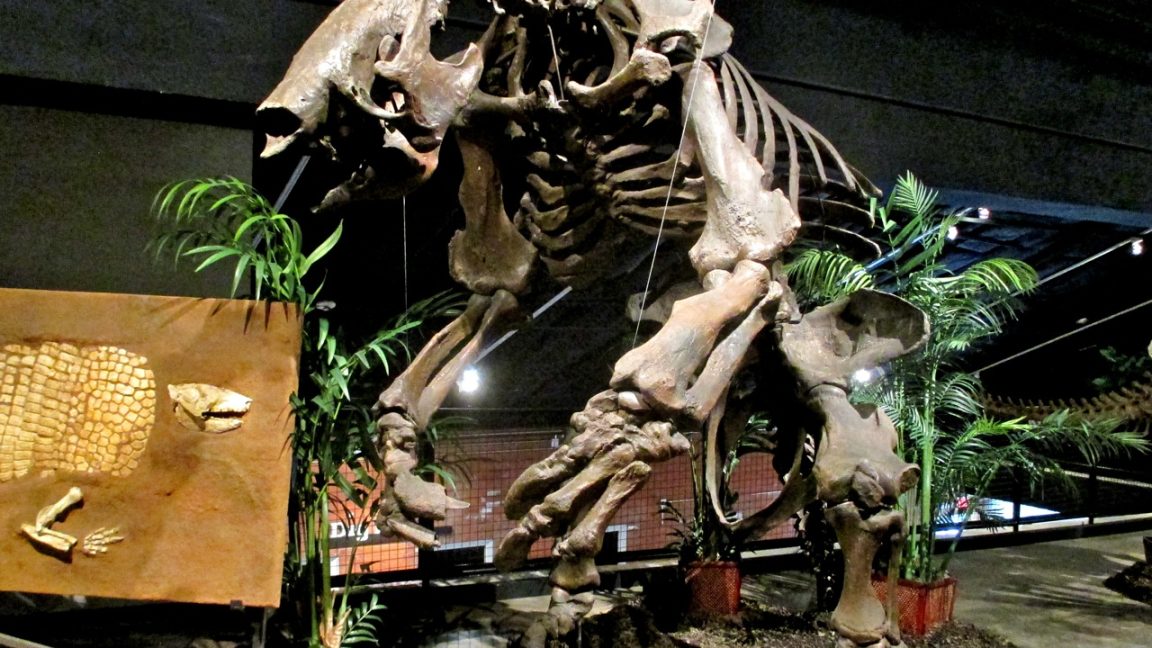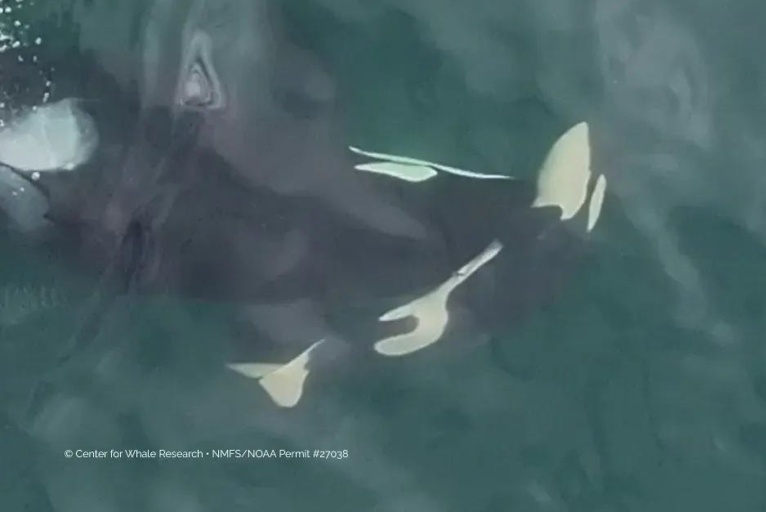
The extinction of the Pleistocene megafauna may be people’s fault after all, according to a recent study.
A team of archaeologists recently examined animal bones at sites dating to the waning years of the last Ice Age. Their results suggest that extinct megafauna like giant sloths, giant armadillos, and elephant-like creatures were on the menu for Pleistocene hunters in South America. And that means human hunters may have played a nontrivial role in killing off the continent’s last great Ice Age megafauna.
Giant ground sloth: It’s what’s for dinner
Archaeologist Luciano Prates of Mexico’s National University of La Plata and his colleagues counted the animal bones left behind by ancient people at 20 archaeological sites in modern-day Argentina, Chile, and Uruguay. They compared the number of bones from extinct megafauna (technically, “megafauna” describes any animal over 44 kilograms) to the number of bones from smaller prey. They also tallied the remains of still-living species of megafauna like vicuñas. The archaeologists hoped to learn whether giant sloths, giant armadillos, and now-extinct species of horses were staples in the diets of Ice Age South Americans.
They chose sites that dated back more than 11,600 years, before the last of the now-extinct Ice Age megafauna vanished from the continent. The team only counted bones with clear signs that people had butchered the animal for food, like cut and percussion marks.
At 15 of the 20 sites, most of the butchered bones came from now-extinct megafauna; at 13 of those sites, extinct Pleistocene megafauna accounted for more than 80 percent of the total animal bones. That suggests that ancient hunters had a clear preference for now-extinct prey like giant sloths, giant armadillos, extinct horses, and even relatives of modern elephants—at least when they could get them.
In what’s now central Chile, the top menu item was Notiomastodon platensis, an extinct relative of modern elephants (they were about the size of a modern Asian elephant but had no tusks). Meanwhile, in Patagonia (the southern swath of South America, spanning parts of Argentina and Chile) and the Pampas grasslands of Uruguay and Argentina, people seemed to prefer two species of giant sloths.
And that makes perfect sense, because when you reduce hunters’ choices to simple math using what’s called the prey choice model (more on that below), these long-lost species offered bigger returns for the effort of hunting. In other words, giant sloths are extinct because they were delicious and made of meat.
Yup, it’s humanity’s fault—again
As the last Ice Age drew to a close, the large animals that had once dominated the world’s chilly Pleistocene landscapes started to vanish. Mammoths, saber-toothed tigers, and giant armadillos died out altogether. Other species went locally extinct; rhinoceroses no longer stomped around southern Europe, and horses disappeared from the Americas until European colonists brought new species with them thousands of years later.
Scientists have been arguing about how much of that was humanity’s fault for quite a while.
Most of the blame goes to the world’s changing climate; habitats shifted as the world mostly got warmer and wetter. But, at least in some places, humans may have sped the process along, either by hunting the last of the Pleistocene megafauna to extinction or just by shaking up the rest of the ecosystem so much that it was all too ready to collapse, taking the biggest species down with it.
It looks, at first glance, like South America’s late Ice Age hunters are safely not guilty. For one thing, the megafauna didn’t start dying out until thousands of years after humans first set foot in the region. Archaeologists also haven’t found many sites that contain both traces of human activity and the bones of extinct horses, giant armadillos, or other megafauna. And at those few sites, megafauna bones made up only a small percentage of the contents of ancient scrap piles. Not enough evidence places us at the crime scene, in other words—or so it seems.
On the other hand, the Ice Age megafauna began dying out in South America around 13,000 years ago, roughly the same time that a type of projectile point called the fishtail appeared. That may not be a coincidence, argued one study. And late last year, another study showed that farther north, in what’s now the United States, Clovis people’s diets contained mammoth amounts of… well, mammoth.
So, the evidence is mixed. Now, Prates and his colleagues are arguing we’re not off the hook. Humans and extinct megafauna only shared South America for less than 3,000 years, and it was over 10,000 years ago, so the odds of evidence being preserved are fairly low. At many of those sites, Pleistocene layers—which would include extinct megafauna—are mixed with bones left behind during the Holocene, which skews the numbers in favor of smaller prey and species that survived the end of the Ice Age.
The researchers focused on 20 sites where the timeline was clear, so they could determine what people were doing before 11,600 years ago, when megafauna was still potentially on the menu. And if some researchers were inclined to exonerate humanity because it looked like we didn’t actually kill that much megafauna, Prates and his colleagues’ results suggest otherwise.
“Our results,” write Prates and his colleagues, “put human foragers again at the heart of the debate.”
Pleistocene hunters shopped in bulk
According to the “prey choice model,” a system that researchers use to explore how hunter-gatherers choose what to hunt, megafauna are prime prey. The prey choice model ranks animals based on how many calories they’re likely to provide versus the amount of energy expended in pursuing them (and in lugging the carcass home and carving it up into edible chunks). Giant sloths, giant armadillos, and extinct American horses all consistently rank near the top of that list.
Pleistocene hunters were every bit as intelligent as modern people, and extremely savvy about their own environments, so they were likely making their own versions of prey choice calculations and opting to shop in bulk, as it were.
Surprisingly, modern-day megafauna like guanaco, taruca, and vicuña don’t rank very high on the prey-choice list compared to the megafauna of yesteryear. You can feed a band of hunter-gatherers by hunting taruca, but not as efficiently or well as you can by going after giant sloths. It appears that more recent hunters shifted to these options only once their more statistically optimal choices got too scarce. And that—along with modern conservation efforts—probably helps explain why these species are still around today.
Science Advances, 2025. DOI: 10.1126/sciadv.adx2615 10.1126/sciadv.adx2615; (About DOIs).



